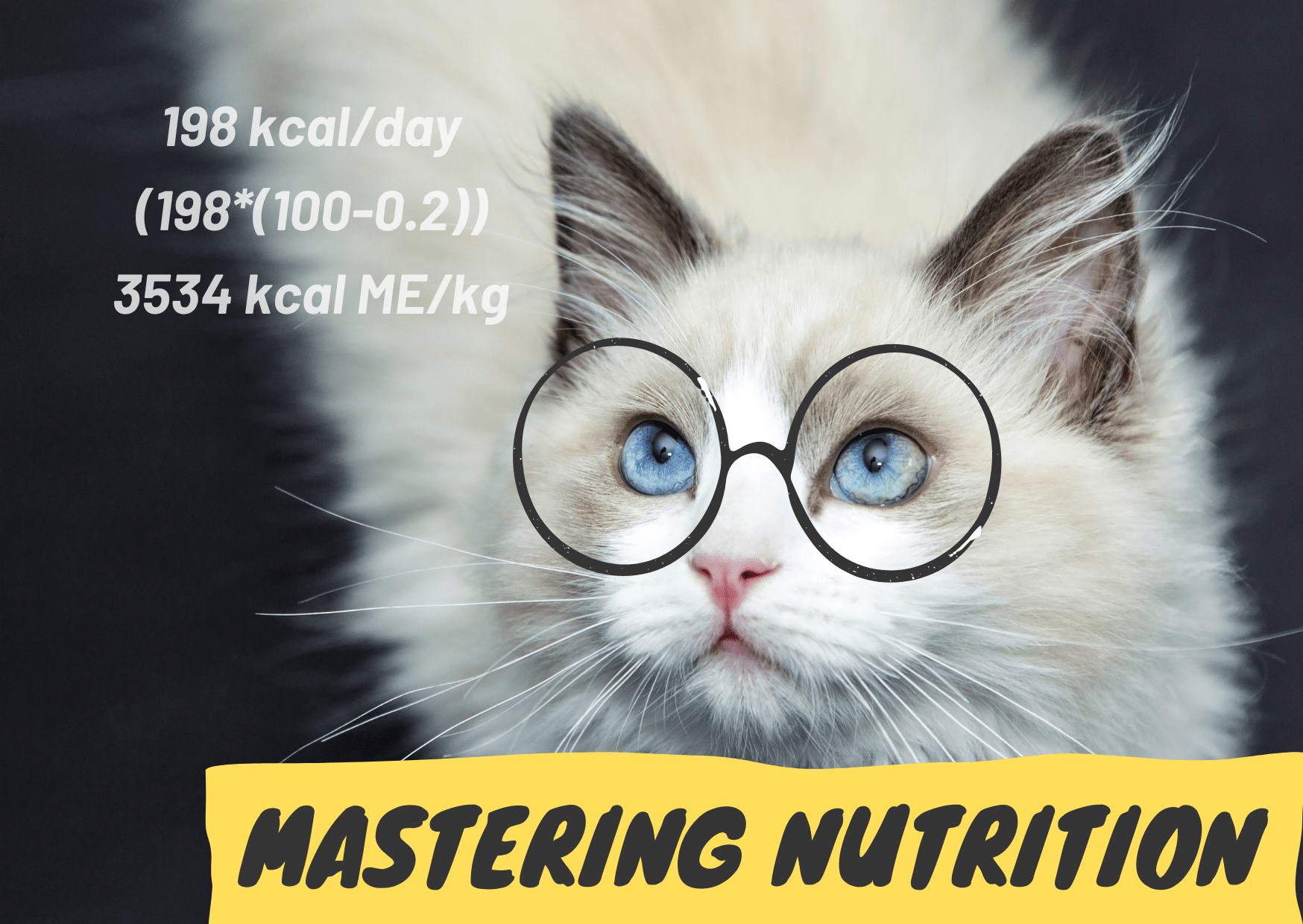As a veterinarian, one of the most common questions I receive from cat owners pertains to the appropriate amount of food to feed their beloved companions.
Indeed, navigating the complex landscape of feline nutrition can be daunting, but fear not – I'm here to provide clarity and guidance.
In this comprehensive guide, we'll embark on a journey of 3 simple steps to understand your cat's specific caloric requirements and determining the optimal cat food daily portion.
By the end of our exploration, you’ll emerge equipped with a calculator to confidently tailor your cat’s daily food intake.
Together, we’ll ensure that your cat receives the nourishment they need to thrive, leading a life of health and vitality.
Step 1: Determining how much calories your cat needs daily
According to Hand, Thatcher, Remillard, Roudebush, and Novotny in the book Small Animal Clinical Nutrition (2010), the average daily energy requirement for maintenance for a standard, not very active healthy cat is about 70 kcal/day/kg metabolic body weight. This information can be found on page 61. And it can be easily calculated as:
(kcal/day) = 70 x (cats’ weight in kg) ^ 0.75
CALCULATION: So, if we have a cat of 4 kg, it is 198 kcal/day (70*(4^0.75).
Step 2: Consider extra factors affecting those needs. What cats need more or less calories?
The previous energy need is an estimation for a healthy standard cat. However, there are a lot of different situations which modify this daily energy requirement.
According to Hand, Thatcher, Remillard, Roudebush, and Novotny in the book Small Animal Clinical Nutrition (2010), these factors are the following ones (this information can be also found on page 61):
- Activity Level: High physical activity levels require more daily energy. Concretely, 60% more. So, if you live with an athlete, multiply their daily energy requirements by 1.6.
- Gestation, Lactation, and Growth: These physiological states require much more energy than maintenance. It is approximately double for gestation and growth and even 5 times more in case of lactation.
- Obesity: Like in humans, obesity is highly related to the presence of several metabolic diseases like diabetes. So, if your cat is starting to be overweight, it is imperious to start a weight management plan to lose those extra kilos. In that case, you need to reduce the energy daily needs by 20%.
Although these feeding guidelines are a valuable starting point, it’s essential to recognize that each pet is unique. Regularly monitor your pet’s weight and condition (you can read our article Is Your Cat Fat? Start a Weight Loss Journey! for more information) and be prepared to adjust their portions as necessary.
And remember, if you are not feeling confident about how to adjust the your cat's food daily portion, don’t hesitate to contact your veterinarian. He/she will love to help you in that important matter!
Step 3: How much food should a cat eat in a day?
Now that we already know how many calories per day our cat needs, we can calculate how much food it is.
On the labels of pet food products there is a section called “calorie content”. In this section, the energy density of the product (in kcal ME/kg of food) is detailed.
So now just dividing the kcal/day that our cats need by the energy density of the food, we obtain the quantity of food to give daily to our cat.
CALCULTAION: For example, if we have a food which has a calorie content of 3534 kcal ME/kg, we need to give 56 g to our cat (as (198/3534)*1000).
Summary
In conclusion, understanding your cat's specific caloric requirements and determining the optimal portion sizes doesn't have to be a daunting task. By following the three simple steps outlined in this guide, you can ensure that your feline companion receives the nourishment they need to thrive.
First, calculate your cat's daily energy requirement using the formula provided, taking into account their weight. Next, consider any additional factors that may affect their energy needs, such as activity level, physiological states like growth, and obesity. Adjust their food daily portion accordingly to meet these requirements and monitor their weight and condition regularly for any necessary adjustments.
With the knowledge and tools provided in this guide, you can confidently provide your feline friend with the specific daily food portion that they need to lead a healthy life.
Neus Torrent
Veterinarian & Animal Nutritionist


0 comments